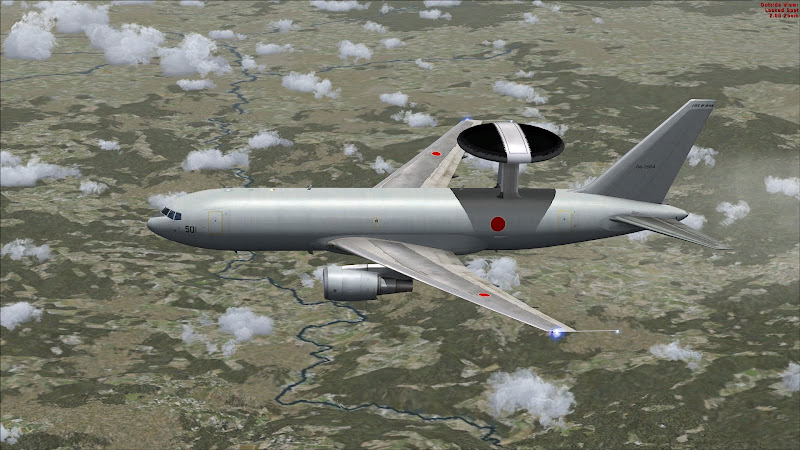 The Boeing E-767 Airborne Warning and Control System (AWACS) developed as a natural progression from the E-3 Sentry following the closure of Boeing's 707 production line. The E-767 combines a Boeing 767-200ER airframe with the APY-2 development of the Sentry's APY-1 radar and mission system.
The Boeing E-767 Airborne Warning and Control System (AWACS) developed as a natural progression from the E-3 Sentry following the closure of Boeing's 707 production line. The E-767 combines a Boeing 767-200ER airframe with the APY-2 development of the Sentry's APY-1 radar and mission system.The Boeing 767 has been selected by Japan to carry out airborne surveillance and command and control (C2) operations for tactical and air defence forces. The surveillance system is based on a flexible, multimode radar, which enables AWACS to separate maritime and airborne targets from ground and sea clutter radar returns.
The 767 AWACS program began in 1993, when the U.S. and Japan agreed to begin development of the system. President George Bush approved the program by signing an agreement in January 1992 with Japanese Prime Minister Kiichi Miyazawa. In keeping with worldwide tradition, the JASDF kept the "E" designation, naming its acquisition the E-767. The E-767 effort evolved when the JASDF required a sophisticated airborne platform that would provide its country with the capability to monitor its sea lanes.
The first flight of the completed E-767 occurred on 9 August 1996 at Everett, Washington. To date only the Japan Air Self Defense Force (JASDF) has ordered the E-767, initially purchasing two in 1992, increasing the order to four in 1994. The first production E-767 entered an extensive testing and certification program with the aim of delivering the first two E-767s to the JASDF in 1998.






